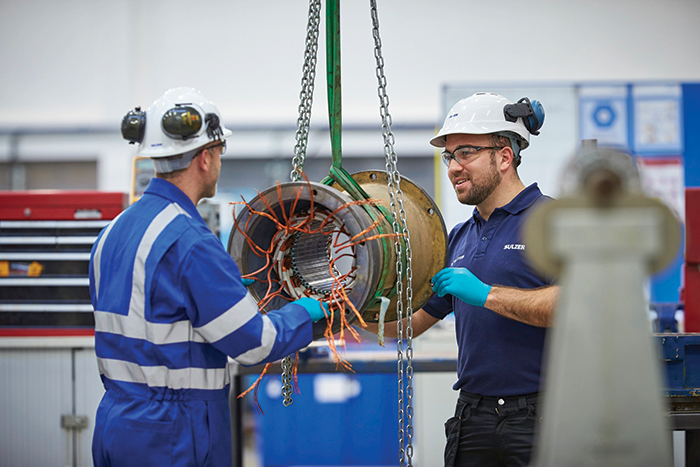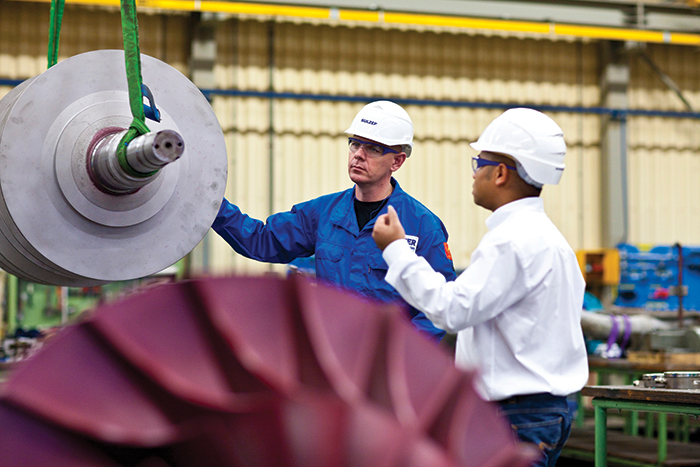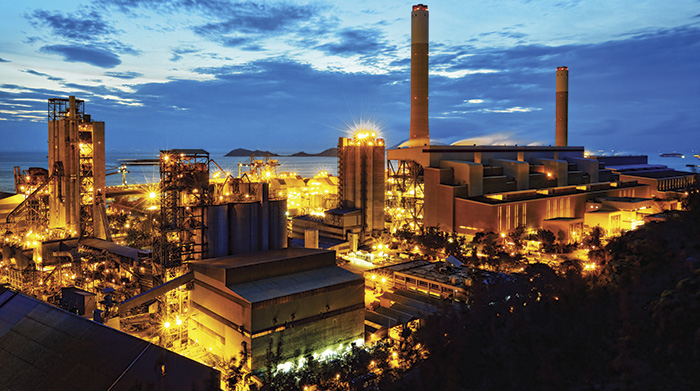The high density of rotating equipment used in refineries means that effective asset management of pumps, turbines, compressors, motors and generators can play a vital role in maintaining plant uptime and achieving overall equipment effectiveness targets. Diligence in this area can also ensure high safety levels and profitability.
Because every refinery operates with steadily aging equipment, these facilities, including petrochemical refineries, must execute the most cost-effective maintenance programs possible to improve asset performance and reliability. Daily production costs within refineries can escalate quickly, so keeping production equipment and components running at optimum performance levels is crucial for delivering a positive bottom line.
Understanding the Costs
Rotating components within any production process will eventually wear and require service or replacement. The type of maintenance program that is used can mean the difference between a good investment and unnecessary expenditures.
 Image 1. The global network of many service provider engineers has considerable experience in maintaining and managing mature equipment by applying experience and the latest technological innovations. (Images courtesy of Sulzer)
Image 1. The global network of many service provider engineers has considerable experience in maintaining and managing mature equipment by applying experience and the latest technological innovations. (Images courtesy of Sulzer)The costs associated with a breakdown include the price of the new parts and the additional labor required to install them. In most cases, these costs will be insignificant compared with the costs associated with lost production and process restarts. For this reason, any maintenance program must focus on preventing breakdowns, which means monitoring and ensuring quality repairs.
In industries where high-value or high-volume commodities are produced, the failure of a seemingly insignificant component can have enormous effects that can bring some—even all—production to a halt. In some instances, facilities benefit from having standby equipment that can be brought online to quickly return production levels to normal; however, breakdowns still lead to a period of lost productivity.
 Image 2. Service providers can provide design improvements to a number of larger rotating components such as pumps, compressors, motors and generators.
Image 2. Service providers can provide design improvements to a number of larger rotating components such as pumps, compressors, motors and generators. In addition, when the process is restarted, the facility may be unable to use a significant quantity of final product because of reduced quality. The overall costs will depend on the piece of equipment and the process in which it operates, but being able to quantify these costs enables the maintenance team to prioritize the assets within the facility.
Reactive & Preventive Maintenance
Historically, many refineries have employed a reactive maintenance policy by which assets are replaced or repaired on a fix-as-fail basis. This method may deliver some cost savings in the short term, unless a more serious failure occurs. Reactive maintenance relies on the skills of the on-site maintenance team and the availability of spare parts. If either of these factors fails to meet expectations, substantial losses may result because of lost production. The purpose of preventive maintenance is to use all available information and techniques to identify assets that require service intervention and schedule the work to be completed as a preventive measure. In this way, the work can be scheduled to cause minimal disruption, and countermeasures can be used to reduce or even avoid lost production costs.
 Image 3. Service providers have many years of experience providing skilled engineers and engineering technology to the refinery sector.
Image 3. Service providers have many years of experience providing skilled engineers and engineering technology to the refinery sector.Thousands of assets are used across a refinery site, and some are more important or expensive than others. In a number of cases, regular maintenance and inspection schedules overlook smaller, seemingly less important equipment, but this can lead to higher costs in the long term. Developing even the most rudimentary scheme for preventive maintenance can pay dividends in terms of reliability and productivity.
Refineries commonly have well-developed relationships with local service and maintenance providers that can offer skills and services that are not available within the facility itself. These service providers often have in-depth knowledge of the demands within the refinery sector and extensive experience providing engineering technology to the industry. Developing the relationship between the refinery's technical engineering department and the local service agent is crucial for improving the operations and maintenance processes within the facility.
A preventive maintenance program that reduces costs associated with repairs caused by unexpected failures can be developed to include all key assets within the refinery, and it may involve procedures such as thermography and vibration analysis.
Some service providers can also provide design improvements to a number of large rotating components such as pumps, compressors, motors and generators that will deliver improved reliability and efficiency.
Process-Specific Solutions
Many pieces of equipment within a typical refinery could benefit from design changes or upgrades to more modern materials.
Improvements to bearing designs on larger pieces of equipment, for instance, can increase service life and reduce time spent on regular maintenance. Impeller design in many multistage compressors could also be improved as part of a scheduled maintenance program. These changes could deliver greater output, which would allow a more flexible working envelope and improve efficiency.
Many facilities within the petrochemical industry could apply innovative solutions to their huge numbers of installed pumps. Remanufacturing of impellers, balancing, and bearing overhauls can be accomplished within scheduled maintenance intervals, and the application of surface treatments can be used to extend the pumps\'92 operational life.
Service Providers
For the majority of cases involving component failure, many service providers can offer reduced lead times for a completed repair. For example, an emergency repair to a steam turbine that had a cracked low-pressure casing saw a team of engineers on-site within 24 hours. The overall shutdown period was just nine weeks, compared with the 14 months that had been offered by the original equipment manufacturer.
Even when replacement parts appear to be unavailable, service providers often have the necessary technology to reverse-engineer new components, manufacture them from the latest materials and correct design flaws in the original.
Improving Long-term Reliability
With so many production processes involving a multitude of pumps, compressors, turbines and motors, refineries must have well-developed asset management systems in place to reduce the amount of reactive maintenance within the plants. As assets mature, an increased amount of intervention will be required. The site engineering team must ensure that the most cost-effective solution is implemented.


